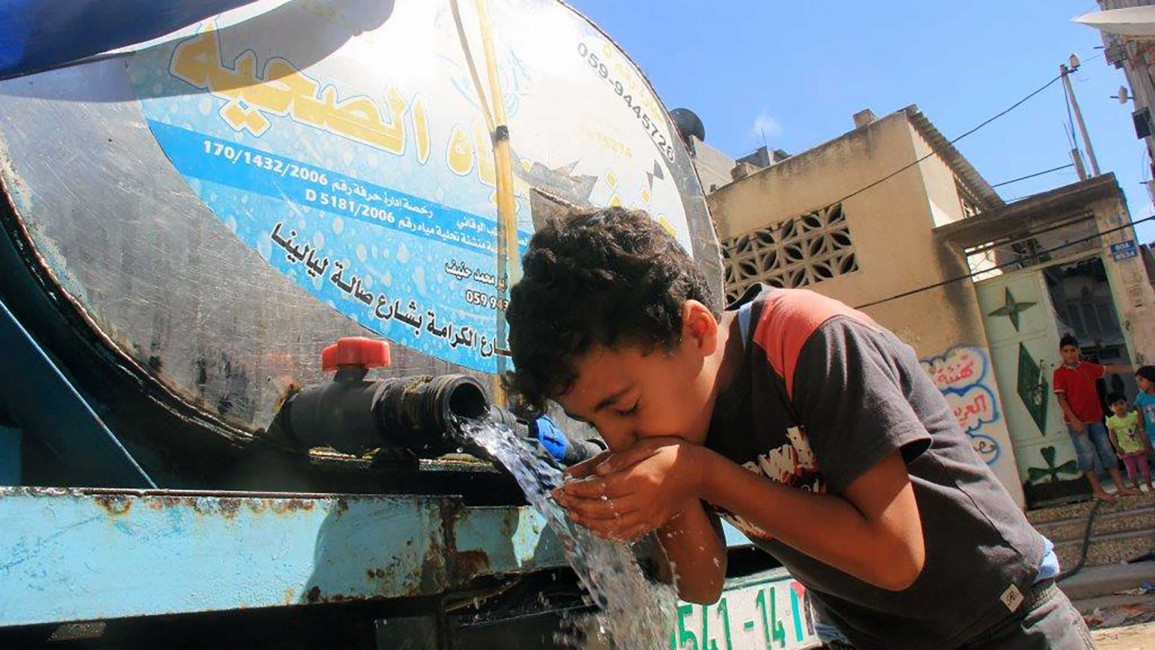
Gaza diaries: The return of the saqqa
One of the toughest trials Gazan families have had to endure during Israel’s most recent assault is the lack of water. In constant fear of not having enough water for my family, I’ve had to remind myself daily of what my mother, may she rest in peace, would always say: “It could be worse.”
Gaza always gets worse. We got used to constant power cuts here, even when they got worse after the tunnels were destroyed. The tunnels were a lifeline: they stretched under the Egyptian-Palestinian border like the roots of a tree seeking water. Everything Gaza needed was smuggled through them, including the fuel to power the electric generators widely used as a more reliable alternative to mains electricity.
But with the destruction of the tunnels after the removal of Egyptian President Mohammad Morsi from power and as a first step against poor stricken Gaza, the fuel crisis started to worsen. The small electric generators could not produce enough power to pump water to higher floors of buildings, and there was little fuel to run them anyway. Water in homes became scarce.
| People are risking their lives for a drop of water |
“Power cuts are okay,” people began to say. “Not water cuts.”
Tanks and tankers
Israel has deliberately targeted water wells. It blew up the only power station in Gaza. Water can no longer be pumped into homes. The only solution then for a “people looking for life in an inferno of death” – an expression I have borrowed from Khaled Meshaal – has become to buy water from a truck on the street.
People call the water seller the saqqa. That is what water sellers were known as when they plied their trade in the quarters of the old cities before modern public utilities were available. The saqqa is back, this time in modern guise. His truck carries a huge water tank filled by companies that specialise in purifying water. The only thing is, tests on purification plants, water transport vehicles, water distribution tanks in shops and water tanks in houses show that 20 percent of the plants are contaminated - as are around 35 percent of vehicles and around 75 percent of tanks in shops. On such a distribution system rest the fates of Gazans.
Israel has played its game well during the long days of its assault on Gaza. Even as Gazans have had to hide from Israel’s incessant land, sea and air bombardment, they have also had to emerge from cover to secure water, scurrying down streets carrying precious filled containers. Those sheltering at home have had to brave air strikes by carrying these containers up to their roofs to fill their tanks. People are risking their lives for a drop of water.
Israel wants to make Gazans resent the Palestinian resistance. Israel is ignoring all agreements that it has signed on water rights. According to international standards, every person should have 150 litres of water to use a day. Average use in Gaza is no more than 40. In comparison, Israelis use up to 350 litres per person per day, with settlers in the West Bank consuming 450 litres per person daily.
The saqqa came to our house yesterday. With my son’s help, and a long hose extended from his truck, he filled our water tank. Except, to our horror, when we turned on our taps, not a single drop came out.
I went to the roof to discover that my son had mistakenly filled a tank belonging to our neighbours who recently abandoned their home. With only one bucket, there was only one solution. My son climbed to the top of our tank, while my other children and I carried that small bucket back and forth from the neighbours’ tank until all the water was transferred.
In Gaza, with its beautiful Mediterranean shore, there is water as far as the eye can see. But hardly a drop to drink.
This is an edited translation from our Arabic edition.




